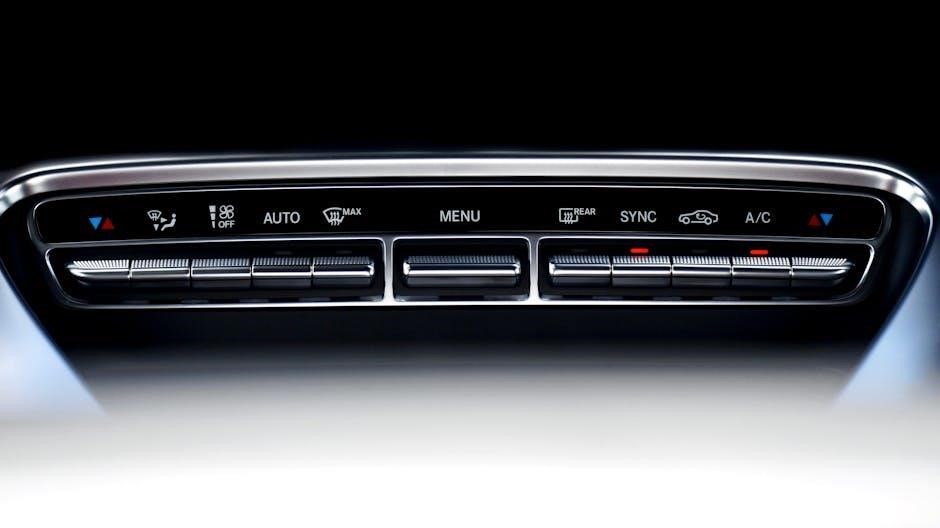toyota prado 150 workshop manual pdf
Toyota Prado 150 Workshop Manual PDF: A Comprehensive Guide
The Toyota Prado 150 workshop manual in PDF format serves as an essential resource․ It offers detailed information for maintenance, repair, and troubleshooting․ Accessing this manual empowers owners and mechanics alike․
The Toyota Land Cruiser Prado 150 series, known for its robustness and off-road capabilities, has been a popular choice since its release․ This vehicle combines the comfort of a passenger car with the durability required for challenging terrains․ Understanding the Prado 150’s mechanical and electrical systems is crucial for proper maintenance and repairs․ Workshop manuals provide detailed insights into these systems, including engine specifications, transmission details, and electrical diagrams․ These manuals are indispensable for both professional mechanics and DIY enthusiasts looking to keep their Prado 150 in optimal condition․ A comprehensive manual ensures accurate repairs and prolongs the vehicle’s lifespan․
Availability of Workshop Manuals in PDF Format
The convenience of accessing a Toyota Prado 150 workshop manual in PDF format cannot be overstated․ Unlike traditional paper manuals, PDFs offer portability and ease of use․ They can be stored on various devices, such as laptops, tablets, and smartphones, allowing mechanics and owners to access repair information anywhere․ Many online sources offer these manuals for download, sometimes for free, although official Toyota manuals may require a purchase․ The digital format also allows for quick searching of specific topics or procedures, saving time and effort during repairs․ Ensure the PDF source is reputable to guarantee accuracy․

Understanding the Importance of a Workshop Manual
A workshop manual is critical for proper vehicle maintenance and repair․ It provides detailed instructions and diagrams․ This ensures work is done safely and effectively․
Detailed Repair Instructions
Detailed repair instructions are a cornerstone of any good workshop manual․ These instructions provide step-by-step guidance on how to fix specific issues with the Toyota Prado 150․ This includes everything from minor adjustments to major overhauls․ The instructions often include diagrams and illustrations, making it easier to understand complex procedures․ Proper adherence to these instructions ensures the repairs are done correctly and safely․
A well-written repair instruction will outline the necessary tools, parts, and safety precautions․ By using detailed repair instructions, mechanics and owners can save time and money․ It minimizes the risk of further damage to the vehicle due to incorrect procedures․
Diagnostic Charts and Troubleshooting
Diagnostic charts and troubleshooting guides are invaluable components of a Toyota Prado 150 workshop manual․ These resources help users identify and resolve issues efficiently․ Diagnostic charts typically present a logical flow, guiding users through a series of checks to pinpoint the source of a problem․ Troubleshooting sections offer potential causes and solutions for common symptoms․
Effective use of these tools requires careful observation and attention to detail․ Users can systematically eliminate potential issues, saving time and effort․ The charts often include reference values and testing procedures․ This ensures accurate diagnosis and helps to avoid unnecessary repairs or replacements․ Overall, they provide a structured approach to problem-solving․
Component Removal and Replacement Procedures
Detailed component removal and replacement procedures are crucial elements of a Toyota Prado 150 workshop manual․ These sections provide step-by-step instructions for safely removing and installing various parts․ Each procedure typically includes a list of required tools and materials․ Clear diagrams and illustrations accompany the written instructions, enhancing clarity․
The manual emphasizes safety precautions to prevent injury or damage․ Torque specifications are provided to ensure proper tightening of fasteners․ These procedures cover a wide range of components, from simple parts to complex assemblies․ Following these procedures carefully helps to ensure correct installation and proper functioning․ This contributes to the vehicle’s overall reliability․

Content Typically Found in a Toyota Prado 150 Workshop Manual
A typical Toyota Prado 150 workshop manual contains sections covering engine specs, transmission service, electrical diagrams, and more․ It gives comprehensive repair and maintenance information;
Engine Specifications and Repair
The engine section of the Toyota Prado 150 workshop manual PDF is a crucial resource for any mechanic or owner looking to perform maintenance or repairs․ This section details the engine’s specific parameters, including its type, displacement, and power output․ Furthermore, it offers step-by-step instructions for various repair procedures, covering everything from simple tasks like changing spark plugs to more complex operations such as rebuilding the engine․ The manual includes torque specifications, wiring diagrams, and diagnostic charts to aid in accurate troubleshooting and repair․ You’ll also find guidance on component removal and replacement, ensuring a thorough understanding of the engine’s inner workings․
Transmission and Drivetrain Service
The transmission and drivetrain section of the Toyota Prado 150 workshop manual PDF provides comprehensive guidance on maintaining and repairing these critical systems․ This includes detailed procedures for servicing both automatic and manual transmissions, outlining fluid changes, filter replacements, and internal component inspections․ It also covers the drivetrain components, such as the transfer case, differentials, and drive shafts, offering instructions for lubrication, seal replacements, and bearing adjustments․ The manual includes diagrams illustrating the assembly and disassembly of these components, along with torque specifications for proper reinstallation․ Diagnostic charts are provided to assist in troubleshooting common issues like slipping gears or unusual noises, ensuring accurate repairs and optimal performance․
Electrical System Diagrams
The electrical system diagrams section within the Toyota Prado 150 workshop manual PDF is crucial for diagnosing and repairing electrical faults․ These diagrams provide a detailed visual representation of the vehicle’s entire electrical network, including wiring layouts, component locations, and circuit schematics․ They cover various systems such as lighting, starting, charging, and electronic control units․ Each diagram clearly labels wires, connectors, and fuses, aiding in tracing circuits and identifying potential issues․ The manual also includes troubleshooting procedures for common electrical problems, along with instructions for using diagnostic tools․ These diagrams are essential for both professional mechanics and DIY enthusiasts working on the Prado 150’s electrical system, ensuring accurate and safe repairs․

Where to Find Toyota Prado 150 Workshop Manuals
Finding a Toyota Prado 150 workshop manual involves exploring online sources and official Toyota channels․ Both free downloads and paid official manuals may be available for access․
Online Download Sources
Numerous websites offer Toyota Land Cruiser Prado 150 workshop manuals for download, often in PDF format․ These sources can range from enthusiast forums to dedicated automotive repair information sites․ It is important to exercise caution when downloading from unofficial sources, as the accuracy and completeness of the manuals cannot always be guaranteed․ Moreover, some downloads may contain malware or viruses, so it is crucial to use reputable antivirus software․ Always verify the manual’s version and applicability to your specific Prado 150 model year and engine type․ User reviews and forum discussions may also provide insights into the reliability of these sources․
Official Toyota Manuals (Paid)
For guaranteed accuracy and comprehensive coverage, purchasing official Toyota Prado 150 workshop manuals is a reliable option․ These manuals are produced by Toyota and provide detailed repair procedures, diagrams, and specifications directly from the manufacturer․ While they typically come at a cost, the investment ensures access to verified information tailored specifically to your vehicle․ Official manuals often include the latest updates and revisions, reflecting any changes or improvements made to the Prado 150 over its production years․ Contacting your local Toyota dealership or visiting the official Toyota website are good starting points for acquiring these manuals․ Digital versions may also be available for convenient access․
Using the Workshop Manual Effectively
To maximize the benefits of a Toyota Prado 150 workshop manual, prioritize safety, gather necessary tools, and meticulously follow each procedure outlined within its pages for optimal results․
Safety Precautions
Before undertaking any repair or maintenance work on your Toyota Prado 150 using the workshop manual, adhering to safety precautions is paramount․ Always disconnect the battery to prevent electrical shocks․ Utilize appropriate personal protective equipment, including safety glasses and gloves․ Ensure adequate ventilation in the workspace to avoid inhaling harmful fumes․ Properly support the vehicle with jack stands when working underneath․
Never work under a vehicle supported only by a jack․ Be mindful of hot surfaces and allow the engine and exhaust system to cool before handling․ Handle fluids, such as oil and coolant, with care․ Dispose of them responsibly according to local regulations․ Familiarize yourself with the location of emergency equipment, like a fire extinguisher and first-aid kit․
Tools and Equipment Required
Successfully utilizing the Toyota Prado 150 workshop manual necessitates having the right tools and equipment․ A comprehensive socket set, including metric sizes, is essential for various fasteners․ Wrenches, both open-end and box-end, are also necessary․ Torque wrenches are crucial for tightening bolts to specified values, preventing damage․ Specialized tools, such as a multimeter, are needed for electrical diagnostics․
A jack and jack stands provide safe vehicle elevation․ Pliers, screwdrivers (Phillips and flathead), and a hammer will handle diverse tasks․ An OBD-II scanner can help diagnose engine issues․ Consider having fluid drain pans, funnels, and safety glasses․ Consult the workshop manual for specific tool requirements for each procedure․ Proper tools ensure efficient and safe repairs․
Following Procedures Carefully
When using the Toyota Prado 150 workshop manual, meticulous adherence to outlined procedures is paramount; Each step is carefully crafted for safety and effectiveness․ Rushing or skipping steps can lead to errors or damage․ Thoroughly read each procedure before starting any work․ Pay close attention to torque specifications and warnings․
Double-check all connections and reassemble components in the correct order․ If unsure about a step, consult the manual or seek expert advice․ Documenting your progress with notes and photos can be helpful․ Maintain a clean and organized workspace․ Proper execution of each step ensures the repair is done correctly and prevents future problems․ Diligence leads to successful outcomes․

Alternative Resources for Repair Information
Beyond the workshop manual, online forums, communities, and guides offer supplemental repair information․ These resources often provide real-world insights and solutions from other Prado owners and mechanics․
Online Forums and Communities
Online forums and communities are valuable resources for Toyota Prado 150 repair information, providing a platform for owners and mechanics to share knowledge and experiences․ These platforms offer practical advice, troubleshooting tips, and solutions to common issues encountered with the vehicle․ Members often share photos, videos, and detailed instructions, supplementing the information found in workshop manuals․
Furthermore, online communities foster a collaborative environment where users can ask questions, receive guidance, and learn from others’ expertise; This collective knowledge base can be particularly helpful for addressing complex repairs or modifications․ Accessing these forums can provide alternative perspectives and real-world insights․
Haynes Autofix Online Guide
Haynes Autofix Online Guide presents an alternative avenue for obtaining repair information for the Toyota Prado 150․ This online platform offers a comprehensive database of repair procedures, diagrams, and troubleshooting guides․ Users can access step-by-step instructions, visual aids, and expert advice to assist with various maintenance and repair tasks․
Haynes Autofix provides a user-friendly interface, allowing users to easily navigate through the available information and find the specific guidance they need․ The online format ensures that the information is always up-to-date and readily accessible․ It’s designed to empower individuals to confidently undertake repairs and maintenance on their vehicles․













